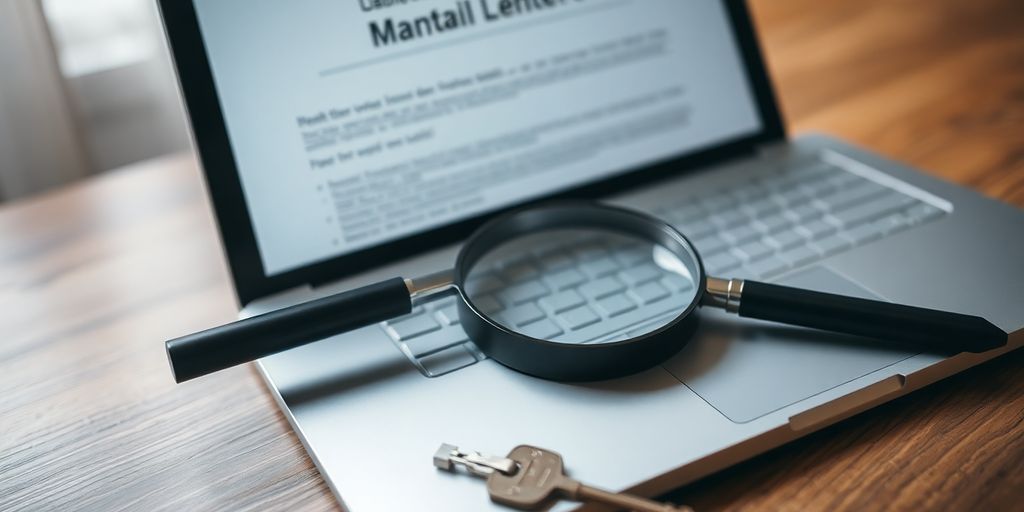Understanding Key Agent Performance Metrics
Blog Author - Published Date

It's important to know how well your agents are doing. This isn't just about making calls; it's about customer satisfaction and efficiency. Understanding these metrics is the first step in improving your team's overall performance and call center metrics.
Customer Satisfaction Scores
Customer Satisfaction Scores (CSAT) are a direct reflection of how happy your customers are with the service they receive. Consistently high CSAT scores indicate that agents are meeting or exceeding customer expectations. It's not just about solving the problem; it's about how the agent makes the customer feel during the interaction. You can gather this data through surveys, feedback forms, or post-call questionnaires. Analyzing trends in CSAT scores can help identify areas where agents excel and areas where they need additional support.
First Call Resolution Rates
First Call Resolution (FCR) measures the percentage of issues resolved during the customer's initial call. A high FCR rate is a sign of efficient and knowledgeable agents. When agents can resolve issues quickly and effectively, it reduces the need for follow-up calls and improves customer satisfaction. Improving FCR can significantly impact operational costs and customer loyalty. Here are some ways to improve FCR:
- Provide agents with comprehensive training.
- Equip agents with the right tools and resources.
- Empower agents to make decisions and resolve issues independently.
Call Handling Efficiency
Call Handling Efficiency looks at how long agents spend on each call and how effectively they use that time. It's not just about speed; it's about finding the right balance between efficiency and quality. Agent ranking can be influenced by this metric. Efficient call handling can lead to reduced wait times, increased call volume, and improved resource utilization.
Monitoring call handling efficiency can help identify areas where agents may be struggling, such as navigating systems, accessing information, or resolving complex issues. By addressing these challenges, you can help agents become more efficient and provide better service to customers.
Establishing a Robust Evaluation Framework
It's time to talk about how we actually measure agent performance. You can't just say someone is doing well; you need a system. This section is all about setting up that system, so it's fair, accurate, and actually helps agents improve.
Defining Clear Performance Criteria
First things first, what does "good" even look like? We need to spell it out. This means defining exactly what we're measuring, and how we're measuring it. Think about things like customer satisfaction, resolution times, and adherence to company policies. The more specific you are, the better. For example, instead of "good communication skills," try "uses positive language in at least 90% of interactions."
Here's a quick list of things to consider when defining criteria:
- Is it measurable?
- Is it achievable?
- Is it relevant to our business goals?
Assigning Appropriate Weightages
Not all criteria are created equal. Some things matter more than others. That's where weightages come in. This is about deciding how much each criterion contributes to the overall score. Customer satisfaction might be worth 40%, while call handling time is worth 20%. It all depends on what's most important to your business. A well-defined scoring framework is vital.
Here's an example of how you might weight different criteria:
| Criterion | Weightage |
|---|---|
| Customer Satisfaction | 40% |
| First Call Resolution | 30% |
| Call Handling Time | 20% |
| Adherence to Company Policy | 10% |
Piloting and Feedback Collection
Don't just roll out your new evaluation framework without testing it first! Run a pilot program with a small group of agents. Get their feedback on the criteria, the weightages, and the overall process. This is your chance to iron out any kinks and make sure the system is fair and effective. Piloting your QA Agent Recognition program is a crucial step.
Think of this as a beta test. You're not looking for perfection, you're looking for problems. The more feedback you get, the better the final product will be.
After the pilot, make sure to actually use the feedback. Adjust the criteria, tweak the weightages, and refine the process based on what you learned. This is an ongoing process, not a one-time thing. The goal is to create a system that's fair, accurate, and helps agents improve their performance. This helps to enhance customer loyalty and trust.
Leveraging Technology for Performance Tracking
It's tough to manage what you can't measure, right? That's where technology comes in. Using the right tools is essential for keeping tabs on agent performance and making smart decisions. It's not just about tracking calls; it's about getting real insights.
Implementing Essential Tracking Tools
There are a ton of tools out there, but you need ones that fit your needs. Think about what metrics matter most to you. Are you focused on call volume, resolution times, or customer satisfaction? The right tools will give you the data you need, without overwhelming you with stuff you don't. Some popular options include platforms like Zendesk, Freshdesk, and Talkdesk. Each has its strengths, so do your homework.
Utilizing CRM Platforms for Data Insights
Your CRM is a goldmine of information. It's not just for storing customer data; it can also track agent performance. By integrating your CRM with your other tracking tools, you can get a complete picture of each agent's performance. This includes things like:
- Average handle time
- Number of cases closed
- Customer satisfaction scores
Analyzing this data can help you identify trends and patterns. Are certain agents consistently outperforming others? What are they doing differently? Are there areas where agents are struggling?
Analyzing Speech Analytics for Deeper Understanding
Speech analytics is a game-changer. It can automatically analyze call recordings to identify keywords, phrases, and emotions. This can give you insights into things like:
- How well agents are following scripts
- Whether agents are using positive language
- Whether customers are satisfied with the interaction
With predictive analytics, you can even forecast future trends and proactively adjust strategies to maximize opportunities and mitigate risks. This helps in making informed decisions about resource allocation and performance improvement initiatives. Speech analytics can also help you identify areas where agents need additional training or support. It's like having a virtual coach listening in on every call.
Fostering Continuous Learning and Adaptability

In the fast-paced world of customer service, agents need to be more than just good at following scripts. They need to be adaptable, always learning, and ready to tackle new challenges. It's not enough to train them once and expect them to stay at peak performance forever. Continuous learning is the key.
Promoting Professional Development
Professional development isn't just about attending a yearly conference. It's about creating a culture where agents are encouraged to seek out new knowledge and skills. This could involve:
- Offering online courses and certifications.
- Providing access to industry publications and resources.
- Encouraging participation in webinars and workshops.
- Mentorship programs pairing experienced agents with newer ones.
By investing in professional development, you're investing in the future of your team. Agents who feel supported in their growth are more likely to be engaged, motivated, and committed to their work.
Integrating Feedback into Training Modules
Feedback is a gift, but only if it's used effectively. Instead of just telling agents what they're doing wrong, use feedback to improve your training modules. This means:
- Analyzing customer surveys and identifying common pain points.
- Reviewing call recordings and identifying areas where agents struggle.
- Soliciting feedback from agents themselves about what they need to succeed.
- Using this data to create targeted training that addresses specific skill gaps. For example, actionable insights can be gleaned from customer interactions to refine training.
Encouraging Skill Enhancement
Skill enhancement goes beyond formal training. It's about creating an environment where agents are empowered to take ownership of their own development. This can be achieved by:
- Providing opportunities for cross-training in different departments.
- Encouraging agents to shadow top performers and learn from their techniques.
- Offering incentives for agents who complete additional training or certifications.
- Creating a library of resources that agents can access on their own time.
By fostering a culture of continuous learning and adaptability, you can ensure that your agents are always at the top of their game. This not only benefits your agents but also leads to improved customer satisfaction and business outcomes.
Recognizing and Rewarding Top Performers
It's easy to focus on what people do wrong, but it's just as important to celebrate successes. Acknowledging great work boosts morale and encourages others to aim higher. When agents feel appreciated, they're more likely to stay engaged and committed to their jobs. This section explores how to create a system that fairly recognizes and rewards your best agents.
Developing a Recognition Program
Think beyond just handing out bonuses. A good recognition program is about more than money; it's about making people feel valued. Consider things like public acknowledgements, extra vacation time, or opportunities for professional development. The key is to tailor the rewards to what your agents actually want. Make sure the criteria for recognition are clear and transparent, so everyone understands how to earn it. This also helps with employee incentive programs.
Aligning Recognition with Business Goals
Your recognition program shouldn't exist in a vacuum. It needs to tie directly to your company's goals. For example, if you're trying to improve customer satisfaction, reward agents who consistently get high scores. If you want to increase sales, recognize those who exceed their targets. By aligning recognition with business goals, you're not just rewarding good behavior; you're also driving the results you want to see. This alignment also helps with recruitment efforts, as it showcases a company culture that values and rewards performance.
Creating a Culture of Excellence
A culture of excellence isn't built overnight. It requires consistent effort and commitment from everyone in the organization. It's about creating an environment where people are encouraged to learn, grow, and strive for their best. Recognition plays a big part in this. When you celebrate success, you're sending a message that excellence is valued and appreciated. This, in turn, motivates others to raise their own standards and contribute to a culture of continuous improvement.
Here are some ways to foster a culture of excellence:
- Regularly highlight top performers in team meetings.
- Share success stories through internal communications.
- Provide opportunities for agents to learn from each other.
- Encourage agents to take ownership of their work and find ways to improve their performance.
Optimizing Agent Efficiency Through Data
Data is a game-changer when it comes to making agents more efficient. It's not just about tracking numbers; it's about understanding why those numbers look the way they do and then using that knowledge to make real improvements. By carefully examining agent workflows and performance metrics, we can pinpoint bottlenecks and areas where agents might be struggling.
Identifying Areas for Improvement
To really boost agent efficiency, you need to know where the problems are. This means digging into the data to find patterns and trends. For example, are there certain types of calls that consistently take longer to resolve? Are some agents struggling with specific software or processes? Video chat interactions can provide valuable insights into agent performance.
- Analyze call handling times for different call types.
- Track the number of transfers or escalations.
- Monitor agent adherence to established procedures.
Streamlining Workflow Processes
Once you've identified areas for improvement, it's time to streamline those workflows. This could involve simplifying processes, providing better training, or implementing new tools. The goal is to make it easier for agents to do their jobs quickly and effectively. Sales data analysis can help identify trends and patterns in customer interactions.
By focusing on streamlining workflows, you can reduce the amount of time agents spend on non-essential tasks, freeing them up to focus on providing excellent customer service.
Enhancing Resource Utilization
Making sure agents have the right resources at their fingertips is key to efficiency. This includes everything from software and hardware to training materials and support staff. If agents are constantly struggling to find the information they need or waiting for assistance, their efficiency will suffer. Consider these points:
- Ensure agents have access to a comprehensive knowledge base.
- Provide ongoing training on new products and services.
- Optimize the use of CRM and other essential tools.
Driving Customer Satisfaction Through Agent Excellence
It's pretty obvious, but let's state it anyway: happy customers are good for business. When agents perform well, customer satisfaction goes up. It's not rocket science, but it does take work. The key is to connect agent performance directly to the experiences customers are having. We need to make sure agents have the tools and training to not just solve problems, but also to create positive interactions.
Connecting Agent Performance to Customer Outcomes
We need to see how agent actions affect customer satisfaction. Are customers happier when agents resolve issues quickly? Do personalized interactions lead to better reviews? By tracking these connections, we can show agents how their work directly impacts the business. It's not just about closing tickets; it's about making customers feel valued. For example, we can track:
- The correlation between First Call Resolution (FCR) and customer satisfaction scores.
- The impact of personalized greetings on customer retention rates.
- The effect of proactive follow-ups on customer loyalty.
Personalizing Customer Interactions
Generic interactions are a huge turnoff. Customers want to feel like they're talking to a real person who understands their needs. Agents should be trained to use customer data to tailor their responses. This could mean referencing past interactions, acknowledging specific preferences, or simply using the customer's name. It's about making each interaction feel unique and relevant. Here's how we can do it:
- Equip agents with easy access to customer history and preferences.
- Train agents on active listening and empathy skills.
- Encourage agents to use a conversational and friendly tone.
Building Customer Loyalty
Loyal customers are the best customers. They stick around, spend more, and recommend your business to others. Agent excellence plays a big role in building this loyalty. When agents consistently provide great service, customers are more likely to become advocates for your brand. It's a long-term investment that pays off in spades. Some ways to build customer loyalty include:
- Implementing a loyalty program with exclusive benefits.
- Providing proactive support and anticipating customer needs.
- Soliciting feedback and acting on it to improve the customer experience.
Agent performance is not just about metrics; it's about building relationships. When agents focus on creating positive experiences, customer loyalty naturally follows. This, in turn, drives business growth and creates a sustainable competitive advantage.
Conclusion
So, that's the scoop. Figuring out who your top agents are isn't just about looking at one number. It's more like putting together a puzzle, where each piece—customer feedback, how fast they solve problems, and even how they learn new stuff—gives you a clearer picture. When you use data the right way, you can really see what makes someone great at their job. And once you know that, you can help everyone else get better too. It's a win-win: your team gets stronger, and your customers get happier. Pretty neat, huh?
Frequently Asked Questions
What are the most important things to measure when checking how well an agent is doing?
We look at things like how happy customers are (Customer Satisfaction Scores), if problems are fixed on the first try (First Call Resolution Rates), and how quickly and well agents handle calls (Call Handling Efficiency). These tell us who's doing a great job.
How do you figure out a good way to judge agent performance?
We set clear rules for what makes a good agent, decide how important each rule is, and then test our system to make sure it works well. We also ask for feedback to make it better.
What kind of tools do you use to watch how agents are doing?
We use special computer programs to keep track of agent work. This includes tools that help us manage customer info (CRM platforms) and even programs that listen to calls to understand what's happening (Speech Analytics).
How do you help agents keep getting better at their jobs?
We help agents learn new things all the time, use what we learn from their work to improve training, and always push them to get better at their jobs.
How do you show appreciation for the agents who do the best work?
We have special ways to say 'thank you' to our best agents. We make sure these awards help us reach our company goals and create a place where everyone wants to do their best.
How does looking at data help agents work smarter?
We use the information we collect to find out where agents can improve, make their daily tasks smoother, and use our resources wisely so everyone can do their job better.














